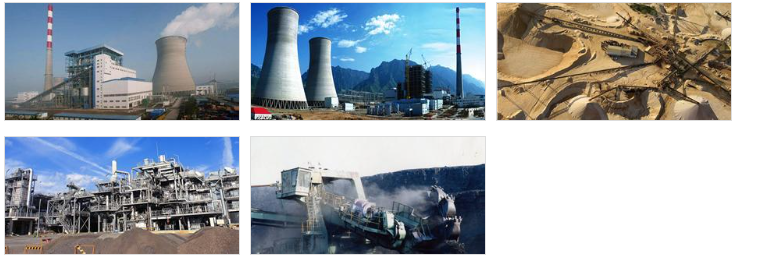English
- Afrikaans
- Albanian
- Amharic
- Arabic
- Armenian
- Azerbaijani
- Basque
- Belarusian
- Bengali
- Bosnian
- Bulgarian
- Catalan
- Cebuano
- Corsican
- Croatian
- Czech
- Danish
- Dutch
- English
- Esperanto
- Estonian
- Finnish
- French
- Frisian
- Galician
- Georgian
- German
- Greek
- Gujarati
- Haitian Creole
- hausa
- hawaiian
- Hebrew
- Hindi
- Miao
- Hungarian
- Icelandic
- igbo
- Indonesian
- irish
- Italian
- Japanese
- Javanese
- Kannada
- kazakh
- Khmer
- Rwandese
- Korean
- Kurdish
- Kyrgyz
- Lao
- Latin
- Latvian
- Lithuanian
- Luxembourgish
- Macedonian
- Malgashi
- Malay
- Malayalam
- Maltese
- Maori
- Marathi
- Mongolian
- Myanmar
- Nepali
- Norwegian
- Norwegian
- Occitan
- Pashto
- Persian
- Polish
- Portuguese
- Punjabi
- Romanian
- Russian
- Samoan
- Scottish Gaelic
- Serbian
- Sesotho
- Shona
- Sindhi
- Sinhala
- Slovak
- Slovenian
- Somali
- Spanish
- Sundanese
- Swahili
- Swedish
- Tagalog
- Tajik
- Tamil
- Tatar
- Telugu
- Thai
- Turkish
- Turkmen
- Ukrainian
- Urdu
- Uighur
- Uzbek
- Vietnamese
- Welsh
- Bantu
- Yiddish
- Yoruba
- Zulu
Telephone: +86 13120555503
Email: frank@cypump.com
Nov . 27, 2024 05:00 Back to list
Efficient Solutions for Deep Water Waste Management with Submersible Pumps
Understanding Submersible Sewage Pumps A Comprehensive Guide
Submersible sewage pumps are an essential component in modern wastewater management systems. These robust devices are designed to remove sewage and wastewater from a lower level to a higher elevation, often in settings where conventional pumps would struggle. Their unique design and operational mechanisms make them ideal for various applications, including residential, commercial, and industrial environments.
How Submersible Sewage Pumps Work
The fundamental principle behind submersible sewage pumps is quite simple. They consist of a sealed motor and impeller that are submerged in wastewater. Unlike standard pumps that pull fluid into a chamber, submersible pumps push the fluid through the discharge pipe. Their design allows them to handle a wide variety of solids and debris typically found in sewage, making them indispensable for effectively managing waste.
When the sewage level in a pit or sump rises to a certain point, the float switch activates the pump. This mechanism starts the motor, which drives the impeller to create a centrifugal force. The force propels the sewage through the discharge pipe, effectively relieving the pressure and height of wastewater accumulated in the sump. The pump continues to work until the water level stabilizes, at which point it shuts off until needed again.
Key Features and Benefits
Submersible sewage pumps come with various features that enhance their performance and longevity. Here are some of their key advantages
1. Durability Built with robust materials that resist corrosion and wear, these pumps can handle abrasive debris and chemicals present in sewage.
2. Efficiency Submersible pumps operate in a submerged state, reducing cavitation and air binding. This efficient operation translates to lower energy consumption over time.
3. Space-saving design As submersible pumps operate underwater, they require less surface area for installation. This characteristic is particularly beneficial in urban settings or areas with limited space.
4. Easy Installation Many submersible pumps come with the necessary attachments for a straightforward setup. They can be easily lowered into a sump or wet well and connected to outlet piping.
5. Versatility These pumps are versatile and can be used in a range of contexts—from residential homes to municipal wastewater treatment facilities. Their ability to handle solids, including human waste and other debris, makes them suitable for a wide range of applications.
Typical Applications
submersible sewage pumps

The applications of submersible sewage pumps are vast and varied. Some common uses include
- Residential Basements Homeowners often use submersible sewage pumps to prevent water and sewage from collecting in basements, particularly where gravity drainage is insufficient
.- Pumping Stations Municipalities rely on these pumps for wastewater treatment facilities to transport sewage from homes and businesses to treatment plants.
- Flood Control In areas prone to flooding, submersible pumps can be deployed to quickly remove excess water from basements or other low-lying areas.
- Industrial Facilities Many industries require the efficient disposal of sewage and effluent wastewater generated in manufacturing processes.
Maintenance and Care
While submersible sewage pumps are designed for durability, regular maintenance is crucial to ensure optimal performance. Here are a few maintenance tips
- Routine Inspections Regularly check the pump for any signs of wear or damage, particularly the power cord and motor components.
- Clean the Impeller Remove any debris that may become trapped around the impeller to maintain efficiency.
- Test Operation Periodically test the pump by filling the sump with water and ensuring that the pump activates and deactivates correctly.
- Check Float Switch Ensure that the float switch moves freely and isn’t stuck, as this can lead to pump failure or continuous operation.
Conclusion
Submersible sewage pumps play a pivotal role in managing wastewater across various applications. Their innovative design and efficiency make them an ideal choice for handling sewage effectively. Understanding how these pumps work and their maintenance needs can help ensure reliable service and extend the lifespan of these critical components in wastewater management systems. Proper care and timely interventions can prevent costly repairs and enhance the efficiency of sewage disposal systems, benefiting both residential and commercial operations.
-
ISG Series Vertical Pipeline Pump - Chi Yuan Pumps Co., LTD.|High Efficiency, Energy Saving, Low Noise
NewsJul.30,2025
-
ISG Series Vertical Pipeline Pump- Chi Yuan Pumps|High Efficiency&Low Noise
NewsJul.30,2025
-
ISG Series Vertical Pipeline Pump-Chi Yuan Pumps Co., LTD.|High Efficiency&Energy Conservation
NewsJul.30,2025
-
ISG Series Vertical Pipeline Pump - Chi Yuan Pumps Co., LTD.|Advanced Hydraulic Design&Energy-Efficient Solutions
NewsJul.30,2025
-
ISG Series Vertical Pipeline Pump - Chi Yuan Pumps Co., LTD.
NewsJul.30,2025
-
ISG Series Vertical Pipeline Pump - Chi Yuan Pumps Co., LTD.|energy-efficient fluid handling&industrial durability
NewsJul.30,2025










